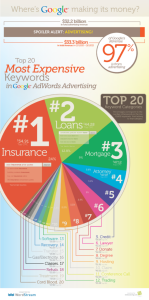— August 18, 2017
Working with clients in digital marketing can be a great experience. It’s magnificent to watch an organization’s restricted marketing strategy blossom into a thoughtful and strong lead generation powerhouse.
Seeing their digital presence get its feet on the ground and start running forward is remarkable. But bad clients can make this exceptional experience pretty excruciating.
Well, here’s the thing, I hate to be the bearer of bad news, but more often than not, “bad clients” are actually the byproduct of bad or thoughtless executive strategy. This includes unintentional positioning in sales, unorganized meetings, bad onboarding, and a tendency to say “Yes” all the time instead of guiding the strategy with an established process.
Have you ever had a client be convinced that no one was leading the project you were in charge of? Or maybe they were sure something was being neglected or that this strategy was less than the best. They’re going to assume these kinds of conclusions for one of two reasons. Either you’re incompetent or you have poorly managed executive strategy.
If you’re incompetent this article isn’t for you. Take some online classes and grab an internship. Learn to teach yourself and watch organized and successful professionals at work.
For those with an aimless executive strategy let’s jump into a discussion about why solid executive strategy is absolutely essential.
Professional Service Agents Don’t Have Time for Bad Executive Positioning
I don’t care if you work at a digital agency, a law firm, or if you’re a marketing freelancer, you don’t have time to explain every single nuance of the complex work you’re doing.
However, instead of just making a bold claim and moving on, let’s look at some actual numbers.
Suppose you spend five hours planning out all the details of a quarter’s worth of blog posts for a client.
Funny story: I’m not just making up that five hours, I had a meeting with an account manager recently who was really doing this, in real life. So, this happens. Unfortunately.
Anyway, in those five hours, you rock out the blog post titles, focus keywords, target persona, the persona’s pain points and questions that will be addressed, publish date, a detailed concept of the post, links from other websites that support the concept, the call-to-action featured in the post, and any questions for the client that surfaced during all of this research.
You do all of this research for three months of blog posts in one sitting and when you’re done you have about 1/3 of the total quarterly strategy solidified. Congrats… kind of.
The Breakdown of This Time Investment isn’t Promising
Let’s pretend that you’re a marketing agency and peak capacity for you is 14 clients who have robust inbound marketing strategies with regular blogging. The time and financial investment for this kind of planning are outlined as follows:
5 hours in quarterly blog planning X 14 clients = 70 hours per quarter.
Or, 23 hours and 20 minutes per month.
Sidenote: that’s the equivalent of a medium-ish sized retainer. Suppose you charge about $ 300/hr for your services. That’s $ 7,000/mo in billable hours being spent planning out blog posts. This doesn’t factor in the time spent writing the blog posts and doesn’t lead to anything completed as it’s only a third of what goes into the actual quarterly strategy.
This method isn’t profitable so it has to change.
What’s the deal with all of this up front research?
When I probed for some information regarding why we’re spending so much time in up front work, I found that it was so we could prove to the client that we’ve thought everything through.
This is quintessential “Bad Executive Strategy”.
At some point, we said “Yes” too many times, or got asked a random question out of left field and didn’t have the confidence in our own expertise to say “I don’t know that off the top of my head… how would I know that?”. Then, the result is a client who thinks they know more than us and need to babysit our process.
At the end of the day, we need to not be required to supply that height of research to a client on a quarterly basis. Not to say we shouldn’t do this research at all, but there’s a more appropriate workflow that’s more profitable and employs the help of content creators. Maybe the research doesn’t roll out to the client following the current timeline, and it’s up to our positioning to make this adequate.
First Step to Get Our Executive Strategy on Track
You might be experiencing something less extreme than what’s illustrated above. But if you have to explain a lot of the details of your work, or have a meeting once a week for an hour, or every other week for that matter, then you might be in a relatively similar situation.
The first thing that needs to happen is a fundamental shift of the mindset behind our work. We’re experts in our field, just like how our clients are experts in theirs. That said, we don’t second guess our client’s business management and shouldn’t tolerate it in return.
To get to a place where we’re comfortable not tolerating this kind of hand holding, consider a few things:
- Are there case studies of our agency helping other clients that prove our expertise?
- Are we recognized in our space as experts? Is our content syndicated somewhere? Do we have any featured authors on publications like Search Engine Journal, Inc, Forbes, etc?
- Do we have social proof of our expertise? High engagement on social media? @mentions from other accounts?
- Has our company been in business for a long time with consistent growth trends?
If you answered yes to any of those items, then you’re on the right track. Believe in yourself, your strategy, and adopt some esteem in your company and the capabilities of the experts who make it what it is.
This shift in the mindset behind your work will make an ample impact on how you discuss your work, processes, and historic outcomes across clients.
Now, Establish What You Do and Outline Your Detailed Playbook for Success
I’m talking about your service catalog and timeline of a client. You may have instituted your service catalog already, and that’s great. Let this process guide how you talk to your clients.
In terms of the timeline for success, notice if they’re asking questions that will be addressed in more detail later. Maybe after you’ve had a chance to do some necessary research. If so, tell them to hold onto that question and give a pretty accurate ball park of when it will get addressed.
“We’ll get to that question along with a few others like it after we’ve had a chance to look at the intricacies of your organization’s position relative to others in your field. That analysis is usually done three weeks into the onboarding phase.”
Supplying off the cuff answers are usually inaccurate and will seem rushed. This sets a precedent that it’s okay to rush you because you’ll supply anything at the drop of a hat and that you might be wrong more often than is acceptable. Congrats, you’ve successfully undermined the value of your work while harming credibility and trust.
Institute Executive Strategy Guidelines and Showcase the Personality of Team Experts
By having an established sales, onboarding, retainer, and offboarding process you’ve constituted the foundation for all client work. This will have an interesting impact on the team’s confidence. If they get asked a question they weren’t expecting it’s no big deal, at all, they’ll set the expectation for when it gets addressed and move on.
Additionally, As they work the process a few times they’ll become comfortable with it. Getting the technicalities of work execution nailed down is a really cool place to be. Now we can look to bringing out our personal best beyond just established methods.
This is my favorite part of executive positioning strategy. Being comfortable in the work we do results in being more present and confident. This results in potent connections with clients and charismatic meetings that are more fun and less boring or stressful.
If You Accept It, Then You Deserve It
There’s one last concept I want to draw a line under and that’s the notion of getting what you deserve. We train our clients how to treat us. If they request a year to date report out an hour before a big meeting with their investors and we hop to, then we deserve to have work thrown at us that way again and again.
When we’re irrationally put through a creative review how do we respond?
If they require us to show every single step of our blogging process and we force that work into our retainer, then well …you get the point.
Leaning on stabilized processes that lead to success is a means to create a more sustainable working environment and a more profitable company.
How our clients view us is rooted in an executive strategy that runs along side established procedures. This will govern our working relationships and if done correctly will result in a mutual respect between all parties. Sounds like a fun and manageable working environment to me.
Digital & Social Articles on Business 2 Community
(52)









